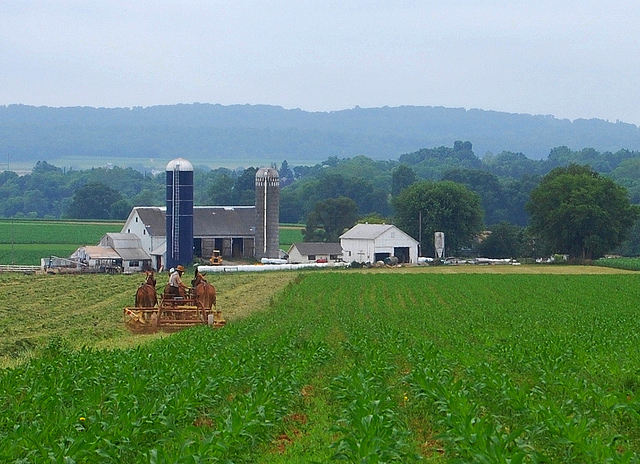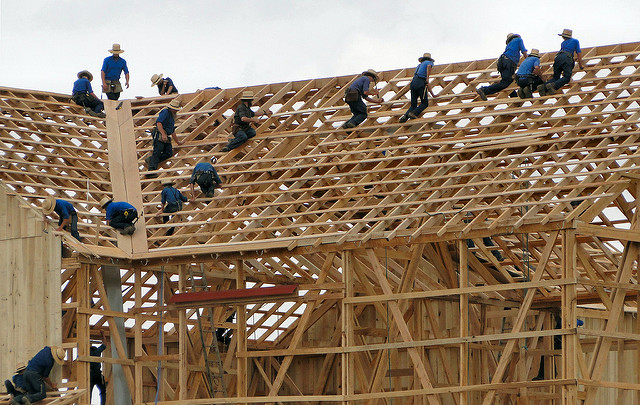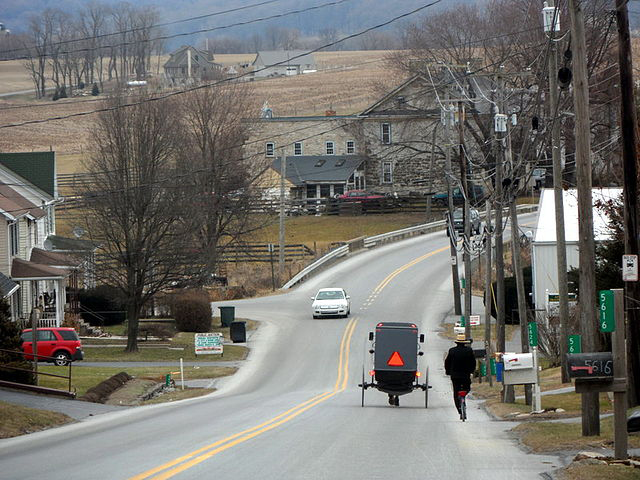The media often report how the Amish form work groups after disasters strike in order to repair and reconstruct buildings that have burned down or blown away. The Amish in Lancaster County, Pennsylvania, exceeded even their own high standards over the past two weeks by rapidly rebuilding structures destroyed by a tornado.

On Wednesday evening, February 24, a series of tornadoes swept across parts of Virginia and Pennsylvania, causing serious destruction in both states. A news report late the next evening indicated that an EF2 tornado, winds estimated at 120 – 125 mph, had touched down near White Horse, in Salisbury Township, eastern Lancaster County. It is farming country, heavily settled by Amish farms and businesses. The path of destruction was about 400 yards wide and 4.7 miles long. It damaged or destroyed up to 50 buildings, causing around $8 million in damages.
Early the next morning, the Amish were arriving from miles around to pitch in and help with the rebuilding process. They indicated to the reporter that they would repair damaged structures as much as possible, and replace ones that were completely destroyed—such as a one-room schoolhouse that was demolished by the storm. They said they planned to begin constructing the new school the next day, Friday, February 26.

The reporter that Thursday evening quoted a neighbor named Paul Miller who witnessed the Amish community’s response and said, “It’s amazing, it’s really amazing to watch these guys work, hustle. At one time I couldn’t even count the number of guys working.”
The reporter visited the command center that had been set up at a local fire company building. One volunteer said that “hundreds and hundreds” of Amish contractors had appeared that Thursday with their employees to help with the cleanup.
Fortunately, another reporter went back to Salisbury Township a week later and filed a report on Wednesday, March 2, about the progress of the Amish cleanup efforts. The reporter, Michaelle Bond, went into detail about some of the destroyed buildings and the ways the Amish were cleaning and rebuilding. She wrote, for instance, that the remains of the Amish school consisted of a rusty green swing set, two seesaws, and a small “stucco-walled bathroom”—a discrete way of saying, an outhouse.
John Smucker, the secretary of the Amish school board and himself a building contractor, was on the scene shortly after the tornado swept through, attempting to figure out how they were going to start rebuilding once daylight came. Less than a week after the storm, the replacement school was nearly completed.

Visiting the new school building, the reporter watched and listened to the pounding of hammers and the buzz of saws. Before the new school could be finished, classes were held in an Amish home in the area. The Amish workers estimated that the new school would be ready for use by the second week after the storm. Mr. Smucker said he was coordinating the rebuilding of the schoolhouse while another Amish man, a cabinetmaker, was providing the storage space in the new building.
One official, Randall Gockley, Director of the Emergency Management Agency for Lancaster County, commented to the reporter that he had witnessed many responses to disasters, but this was the fastest he had seen in his 28 years with the agency. He noted that the tornado had hit at 7:38 p.m. and within 12 hours, hundreds of Amish from all over Lancaster County and even from outside the county, had arrived. “This is the way they do things. They really come together as a community and work to solve the problem.”

Sam Stoltzfus, the president of the fire company in White Horse, said basically the same thing: “We have an awesome community.” Even for non-Amish living in the area and used to the ways they quickly rebuild a barn after a fire, it was amazing that over 3,000 volunteers turned out to help. Stoltzfus estimated that most of the work repairing or rebuilding about 50 houses, barns, chicken buildings, and other structures was completed by the end of February.